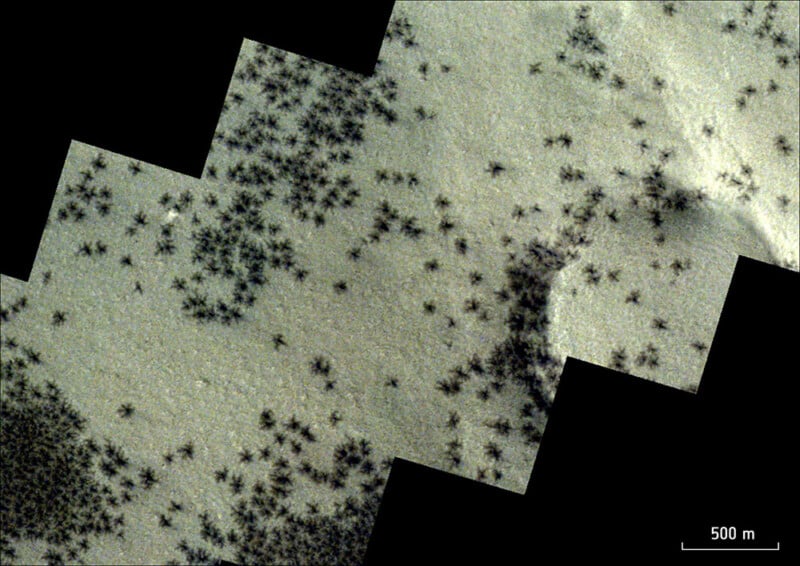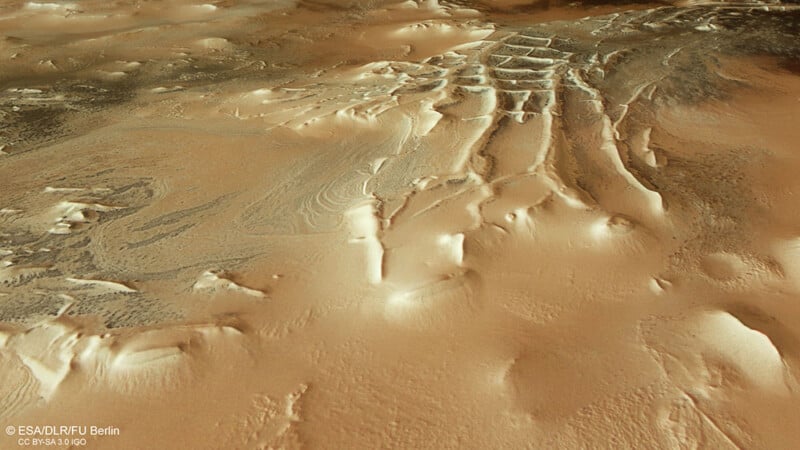
![]()
A photo taken by the European Space Agency’s Mars Express orbiter has set the internet alight after it apparently shows large clusters of black spiders crawling on the surface of the Red Planet’s southern polar region.
Congregated in Mars’ Inca City, the spiders are actually buried carbon dioxide that forms into dark features when warmer weather starts hitting the Martian southern hemisphere.
As the gas expands out of the ice layers on the surface, the channels can measure 0.03 to 0.6 miles (45 meters to 1 kilometer) across and form cracked patterns that resemble spiders.
“The emerging gas, laden with dark dust, shoots up through cracks in the ice in the form of tall fountains or geysers, before falling back down and settling on the surface,” explain the European Space Agency (ESA).
“This creates dark spots of between 45 meters and one kilometer across. This same process creates characteristic ‘spider-shaped’ patterns etched beneath the ice — and so these dark spots are a telltale sign that spiders may be lurking below.”

There’s an Inca City on Mars?
Although not made by the Incas, the Inca City on Mars, also known as Angustus Labyrinthus, is made up of ruin-like ridgelines that are believed to be petrified sand dunes or maybe even the remains of ancient Martian glaciers that left high walls of sediment behind.
Live Science notes that in 2002 the Mars Orbiter realized that the Inca City is contained within a circular feature that is approximately 53 miles (86 kilometers) wide. The alien feature could be an impact crater from a long time ago.

The Mars Express has revealed a great deal about Mars in the last two decades and counting with its High-Resolution Stereo Camera (HRSC) that is capable of imaging the entire planet in full color, 3D, and with a resolution of about 10 meters.
The orbiter continues to image Mars’ surface, map its minerals, explore the composition and circulation of its atmosphere, probe beneath its crust, and study the Martian environment.
The spacecraft’s HRSC has shown everything from wind-sculpted ridges and grooves to sinkholes on the flanks of colossal volcanoes to impact craters, tectonic faults, river channels, and ancient lava pools. The mission has been immensely productive over its lifetime, creating a far fuller and more accurate understanding of our planetary neighbor than ever before.
Image credits: ESA






